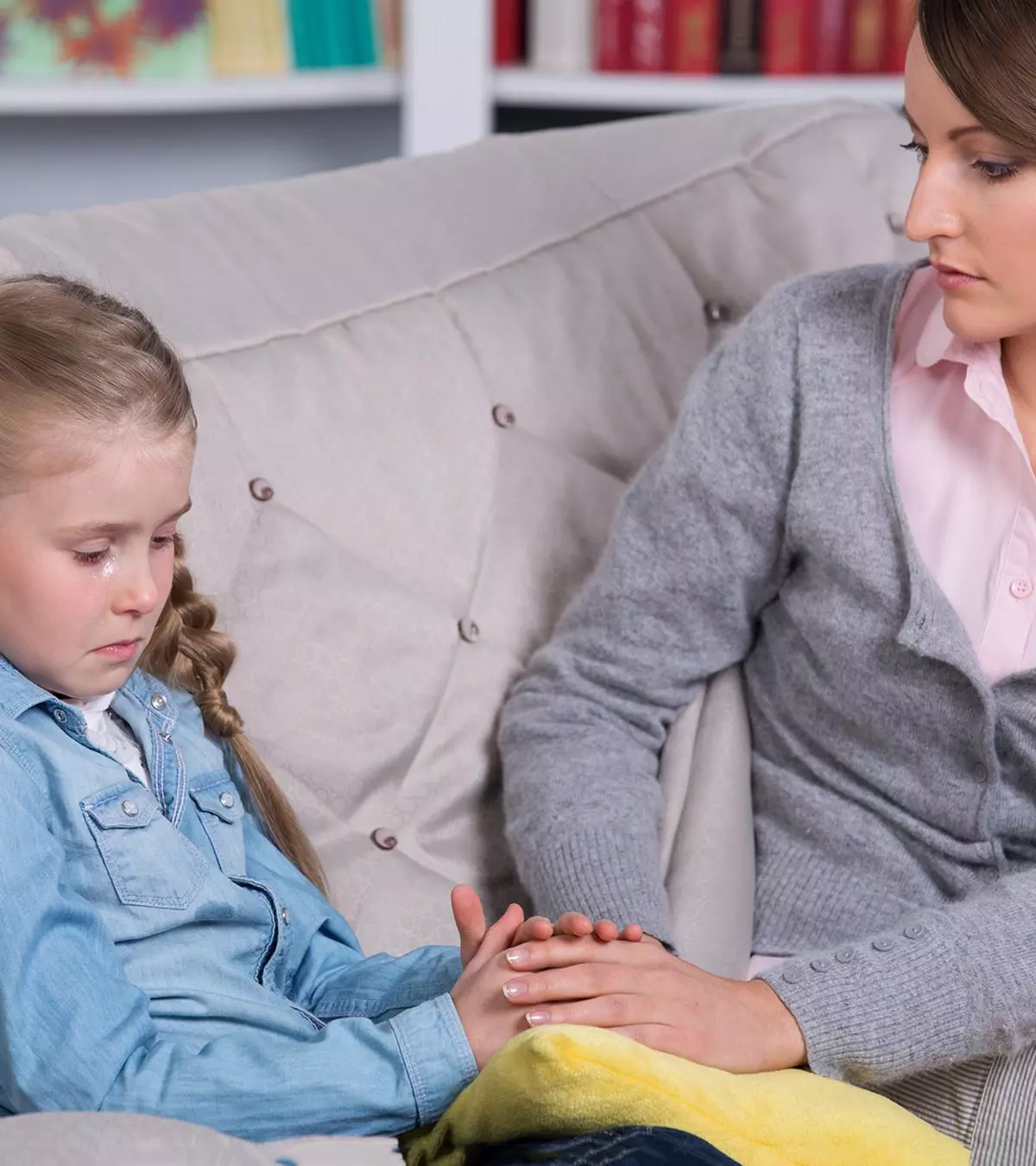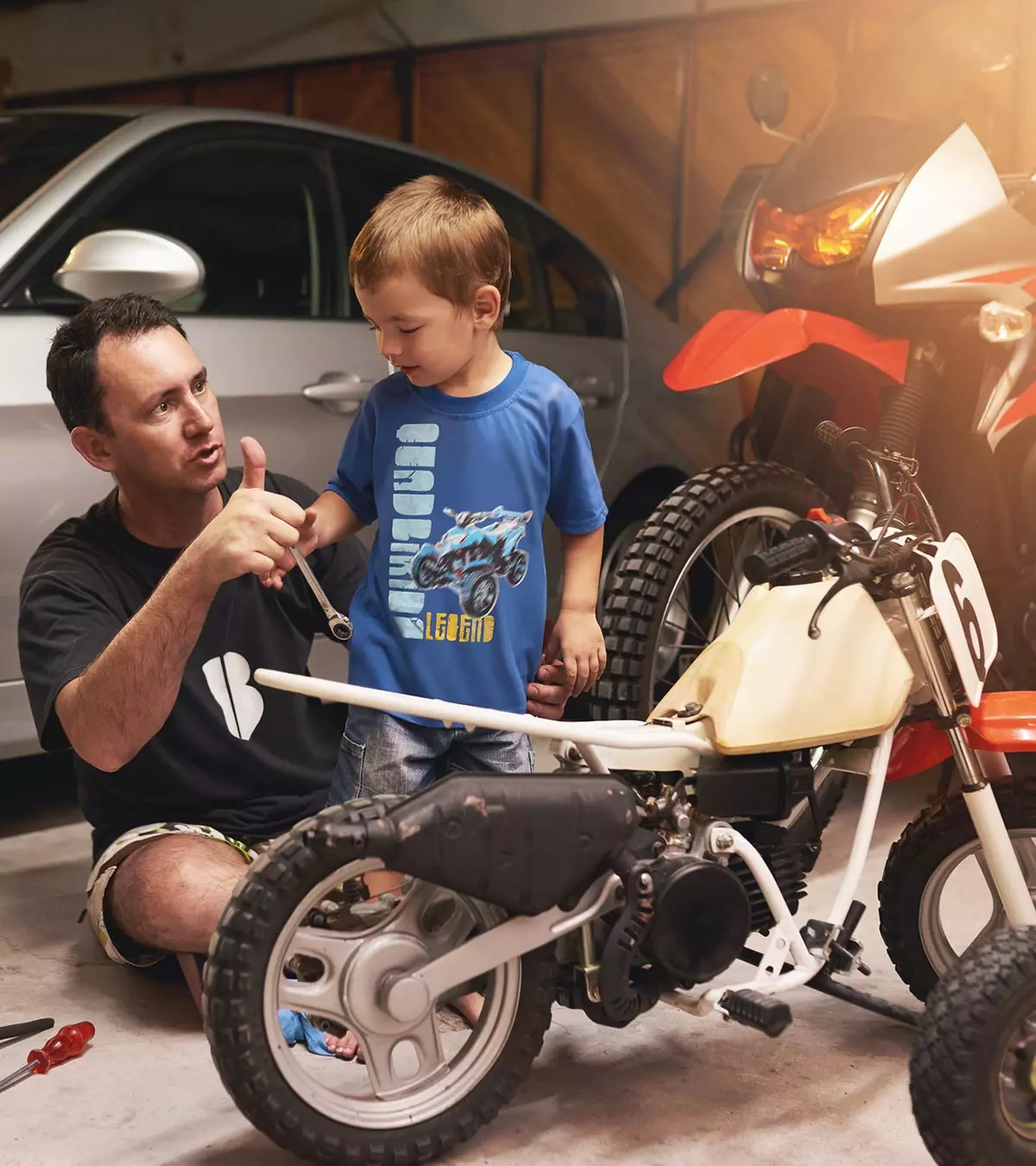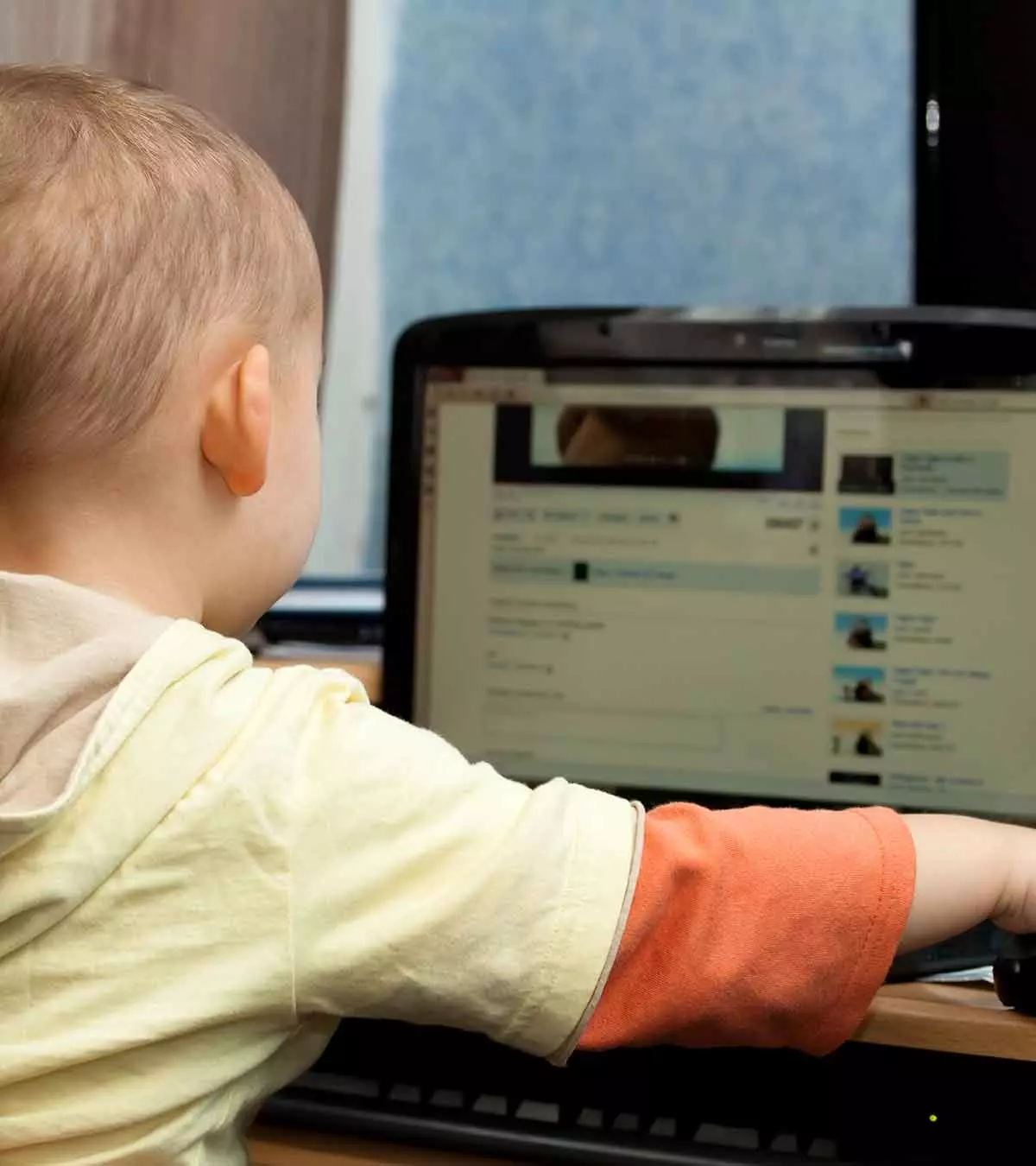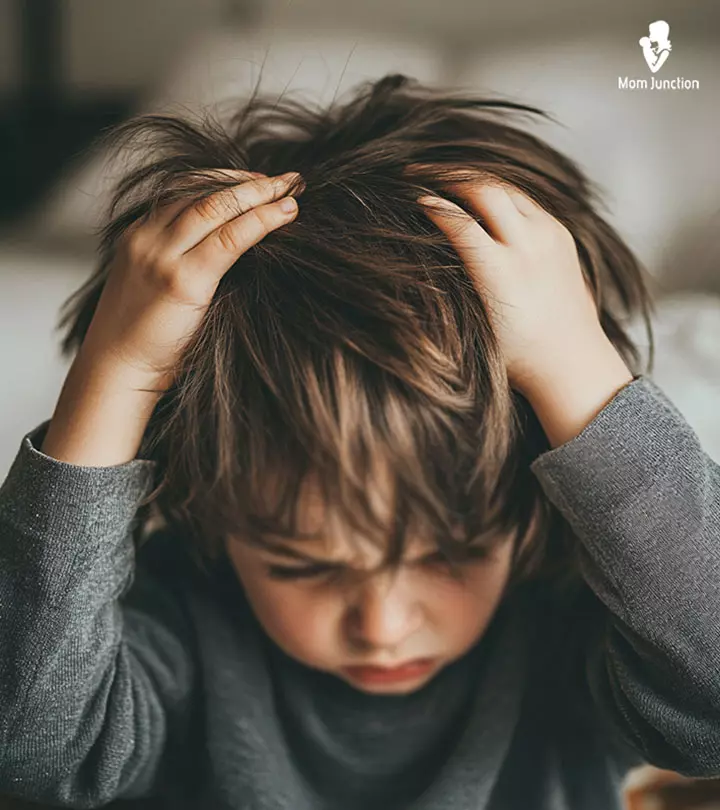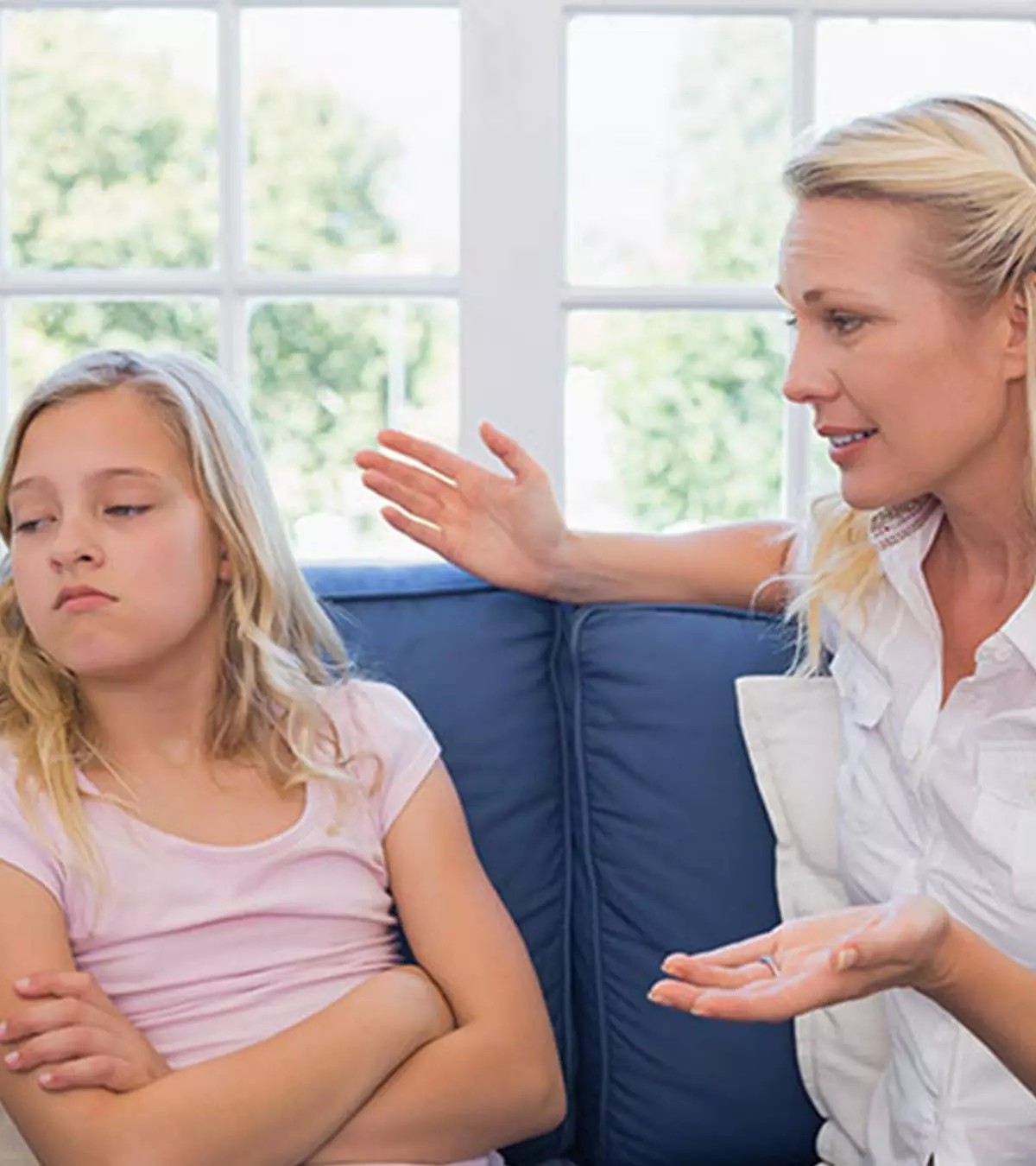
Image: ShutterStock
“Sometimes, when I am angry, I have the right to be angry. But that does not give me the right to be cruel.” – Anonymous
Anger is a normal and healthy emotion in children and adults. However, teaching some tips on anger management for children will help them control and express their anger in a more healthy manner.
It is not unusual for children to experience occasional bouts of anger just as adults do. However, parents and children need to understand the difference between angry feelings and violent behavior. Read this post to learn about some effective tips to help children manage anger with the help of games and worksheets.
Key Pointers
- Children and adults both experience anger, which is a normal and healthy emotion.
- Anger management tips help children who lose their temper fast, have difficulty expressing emotions or don’t understand how their anger affects others.
- Some effective techniques for anger management include taking timeouts, using feeling vocabulary, practicing empathy, and setting a good example.
- Playing games with your child and engaging in physical and creative activities can be beneficial for releasing built-up anger and frustration in a healthy way.
Does Your Child Have Anger Issues?
Everyone gets angry. Even children do too, and that is normal. But some people cannot deal with their anger. Here are a few signs indicating that your child has anger issues (1).
- Getting angry often, even for the smallest of things
- Losing control of self, unable to stop the outburst
- Inability to express feelings coherently
- Failure to see how their anger is affecting other people, doesn’t seem to care about other people’s feelings

Image: Shutterstock
- Behaves recklessly
- Talks threateningly and draws or writes about violence or aggression
- Blames other people for their behavior
- Stays angry for a long time, has trouble moving away from frustration and anger
- Needs to be reprimanded and reminded to control anger
Kids, who act without thinking when they are angry, usually end up getting hurt or hurting others. Sometimes, anger issues in children are evident. Other times you may have to observe the child’s behavior and attitude closely to know.
If your child is displaying signs of anger, it is time to teach how to manage his anger better.
 Quick fact
Quick factWhy Would A Child Be Angry All The Time?
Various factors contribute to angry feelings in a child, with frustration being a common trigger. Frustration arises when a child does not get what they want or is asked to do something that they do not wish to do (2).
Tantrums are also common among children. However, it might indicate an issue if they occur regularly, particularly in children over eight. It becomes a serious concern if the child’s outbursts risk the child or others, cause problems at home and school, and make them feel like they can’t control their anger. Anger issues in children are frequently associated with other mental health conditions such as ADHD, OCD, autism, and Tourette’s syndrome (2) (3).
Anger can also be influenced by genetics and other biological factors. Trauma, family dysfunction, and certain parenting approaches, such as harsh and inconsistent punishment, can contribute to aggression in children, which can interfere with their daily lives (2).
What Is Anger Management?
Anger management is a learning process that teaches kids how to channel their anger healthily and safely.
It is a vital skill that helps children recognize their emotional triggers and learn useful strategies to cope with them. By understanding their emotions, children can express their feelings more effectively and reduce the likelihood of aggressive behavior.
It teaches kids to identify signs of anger and find ways to calm down and productively take action. Please note that anger management is not denying how you feel. It is not about holding or repressing your anger.
Anger is normal and should be expressed. Pent-up anger can be explosive, making the person aggressive and violent. Anger management helps prevent explosive bouts of anger that could hurt your child and others around him or her.
Anger management skills are as essential as any other life skills that your child needs to grow up into a sensible adult. So how can you help your child?
Tips for Anger Management In Kids
Anger management is not easy. And that is exactly why your child should learn it early on. Here are a few tips on how you can help your child manage their anger better (4) (5).
.
1. Take a time-out
Timeouts always help when you are angry. When your child is angry and is in a fit of rage, don’t react or reprimand. That will only fuel the anger. Instead of arguing and indulging the child in a heated conversation, give him or her a timeout. If the child is ranting angrily, let them finish, and then send them to their room, as coolly as you can.
Anger can be quite scary for some children. So do not leave them alone in a timeout as it can escalate their anger. If you observe that your child is getting scared when angry, then support them to take a timeout by staying either with them or near them.
But if your child is aggressive and being violent, stop them immediately, make them sit quietly for a minute or two, until they cool down (6)(7).
- Teaching them breathing exercises and yoga can help them calm down before their anger takes over.
- A walk outdoors and spending time alone can help them gather their feelings and thoughts.
- Counting numbers from one to ten, while breathing in and out heavily, can also help the child cool down.
2. The feeling vocabulary
Kids usually tend to shout, scream, punch, kick, and throw things when they are angry because they do not know how to express their anger verbally. A feeling vocabulary is a list of feeling words that the child can use to show their emotions. Teach them different emotion words that they can use to tell you how they feel (8).
- Some words you could start with are: angry, happy, scared, furious, nervous, anxious, irritated, and annoyed.
- Once you do, encourage the child to use them in sentences such as “I am so angry right now!” or “I am mad at you” or “She is annoying me.”
- Talking is always a better way to express than kicking, punching, biting, throwing, and breaking things; it also promotes social skills.
- Reading books about emotions can help children understand them better and normalize all emotions for them.

Image: Shutterstock
3. Let anger out of the body
Anger is triggered by the amygdala – the part of the brain that controls your fight or flight instinct. Once the emotion is triggered, adrenaline is pumped by the adrenal glands and the testosterone levels in the body, heart rate, and arterial tension increase. When adrenaline levels increase, we feel more energetic and stronger and also tend to speak louder (9).
These changes in the body increase the risk of aggression and violence. To prevent that, it is important to redirect all that adrenaline for something more productive and less harmful.
Punching a boxing bag, shouting into a pillow, karate chopping paper, or just indulging in physical activities such as running, swimming, or playing a sport are some of the most effective anger and stress management activities for kids.
4. Empathize
Empathy can do wonders in managing angry kids. If your child is angry, encourage them to talk about it, but don’t cut them off. Acknowledge their feelings. Recognize the feeling, whether they are angry, frustrated, or just annoyed at something.
Show your child that you care. Often children get angry when they are let down, disappointed or feel neglected. They might feel that anger is the only way they can be heard or taken seriously. Try and look at what you have done wrong to make your child become so angry. In this way, you can help promote empathy development in your child.
After an outburst of anger, sit with your child and ask them in a very sincere way, what is bothering them and how you can help them. Ask them if they would like to go out and have coffee or an ice cream. Going out of the house helps them to regain their composure. Don’t make an issue of their mistakes. Allow them to make mistakes. It’s one way for them to grow. Let them know that you still love them. Don’t make the error of badgering them with long-winded lectures. Just be silent and show them some compassion.
5. Praise good behavior

Image: Shutterstock
The behavior of a child depends on your reaction to it. Children thrive on attention and tend to do things that get them their parents’ attention. So when your child displays good behavior, praise them and appreciate their efforts by practicing positive reinforcement. But do not overdo it. Too much praise can be bad, for they will expect only appreciation and may have a tough time handling criticism.
While praising good behavior is important, pointing out the wrongful behavior in a subtle way and helping them correct it is equally important.
6. Set a good example
Be a model parent and set a good example on how you can manage or control your anger. Parents need to control their own anger by learning how to communicate with each other. If parents cannot communicate civilly, there is little hope that their children will learn the art of good communication. Good communication or having effective communication skills is an art, and it must be learned.
Never be too proud to admit when you are wrong. When you admit your mistakes, you will earn the respect of your children and family and you will be teaching your children how to be humble.
Sylvia Emokpae, a mother of two young boys, shared a candid account of her struggle with anger. She recounts, “One evening, I was so frustrated as I rushed upstairs to put the pacifier back in my son’s mouth that when I did so, I was so angry it showed physically. I shoved the pacifier quite abruptly into my son’s mouth, which caused him to blink and groan out in shock (i).”
She then describes how she effectively managed her emotional turmoil, setting an early example. She reflects, “I immediately said sorry as I caressed his face, worried I might have hurt him. My feelings of failure to help my child sleep and my own sleep deprivation were so deep-rooted that I couldn’t control my emotions — I had just lashed out at him by impulse.” Emokpae then left the room for a bit to calm her nerves for a bit and then went back in the room to hold and cuddle her child as he comfortably fell asleep in her arms.
Parental education and awareness like this are crucial for setting a positive example of healthy conflict resolution in children’s presence. By resolving their issues in a civil manner, parents can avoid making an ugly spectacle of themselves in front of their children. When you do, your children will imitate you and try to deal with their anger without aggression or violence.
7. Have anger rules
Rules are important for disciplining a child. One of the most important rules must be about their behavior when they are angry. Let your child know that it is okay to get angry. Anger is not a bad word. But getting aggressive or violent is not okay. Addressing aggression in kids early on can help prevent more serious behavioral issues down the line. Have simple rules such as:
- No hitting, kicking, biting, pinching, or using any physical violence.
- No screaming – we talk calmly to solve problems.
- No calling names or saying mean things.
- Never speak when angry. Rather postpone it to when tempers are cooled off. When someone in the house shouts, the rest must listen until the shouting dies out.
- Address the issue when everyone is calm.
- Never argue to score points but to address an issue.
- Learn to shake hands, hug and make peace after an outburst.
- Stop carrying on like a stuck record by constantly recalling the past.
Add any more rules you think are necessary, keeping in mind your child’s behavior modification to help them develop problem-solving skills. The most important part is to make sure you and your children adhere to these rules and deal with the consequences when they are broken. No two ways about it.
8. Find an alternative
If children should not scream, kick, or hit when they are angry, what should they do? Well, here are some alternatives that you can get your child to do to release his or her anger safely (10).
- Use a punching bag to release your anger. Hitting a punching bag or a pillow is alright. Hitting people is not.
- Write what you are angry about on a piece of paper and tear it into as many pieces as you can.
- Breathe. Get the child to take deep breaths whenever they feel their anger welling up. Dragon breaths are better – breathe in through the nose and breathe out the anger from the mouth, just like a dragon breathes fire.
- Going to a calm place, away from what is causing the anger, can also help the child to calm down.
- Draw or paint your emotions. Using colors can be a great way to calm the mind and turn the anger into something creative.
- Find out or make your child find out what calms them down, and remind them of those things when you see them starting to get angry.
- Teach your children to sleep over it and discuss the issues that are bothering them in the morning after a goodnight’s rest.
- When addressing issues, it is essential to approach them mindfully. Help your child process the issue in their mind, take a moment to practice mindfulness, and return to the problem when they are calm.
Older kids should be told about the difference between feelings and behavior through anger management activities, which we will talk about next.
Anger Management Worksheets
You can download anger management worksheets for kids from the internet, or make some on your own. Ideally, it is best to create customized sheets for better results. Here are a few examples of the kind of worksheets you can make.
1. How Anger Feels Worksheet
This worksheet focuses on how the child feels physically and emotionally when he is angry. It also helps the child name and identify different sensations he feels in various parts of the body. The worksheet also encourages the child to talk about his behavior when he is angry and whether there is an alternative to it.
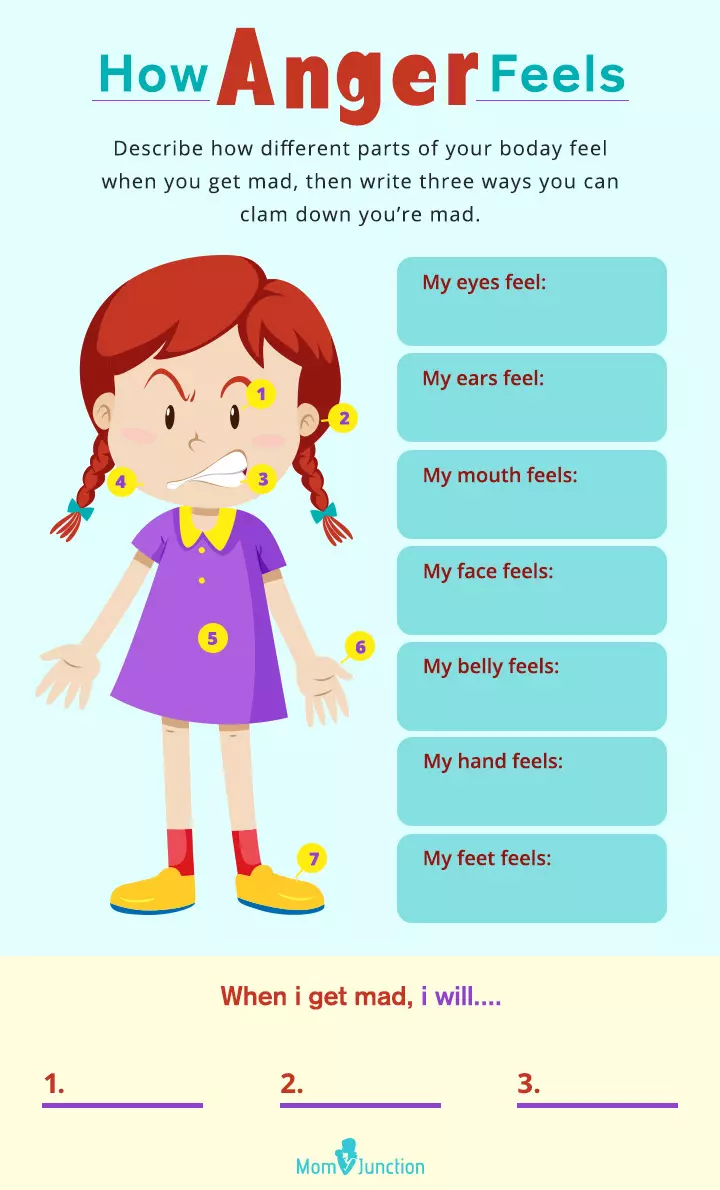
 Quick tip
Quick tip2. What Can I Do? Worksheet
Young children experience anger but do not know how to express it. So they cry, scream, throw things, and hit because that is what they know to do. This worksheet gives them more options of how to safely channel their anger.
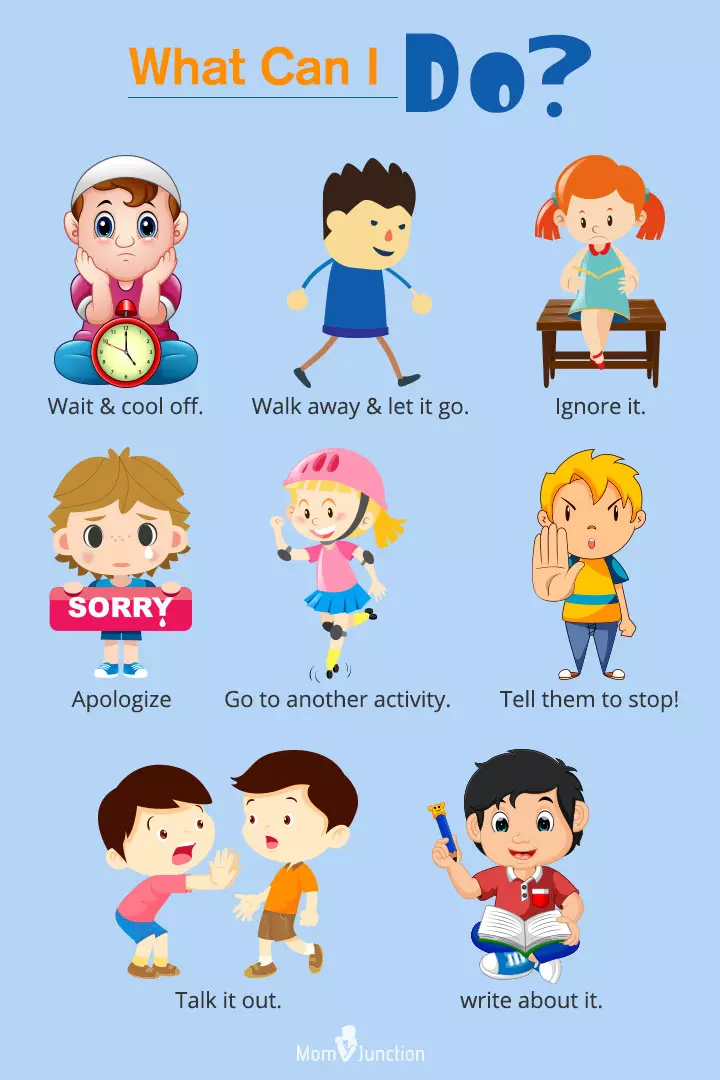
3. Expressing Anger Worksheet
This worksheet teaches them how to express their feelings to a parent or a caregiver. The exercise focuses on the cause of anger, how the child feels when he is angry, and what he wants to be done differently to avoid being angry.
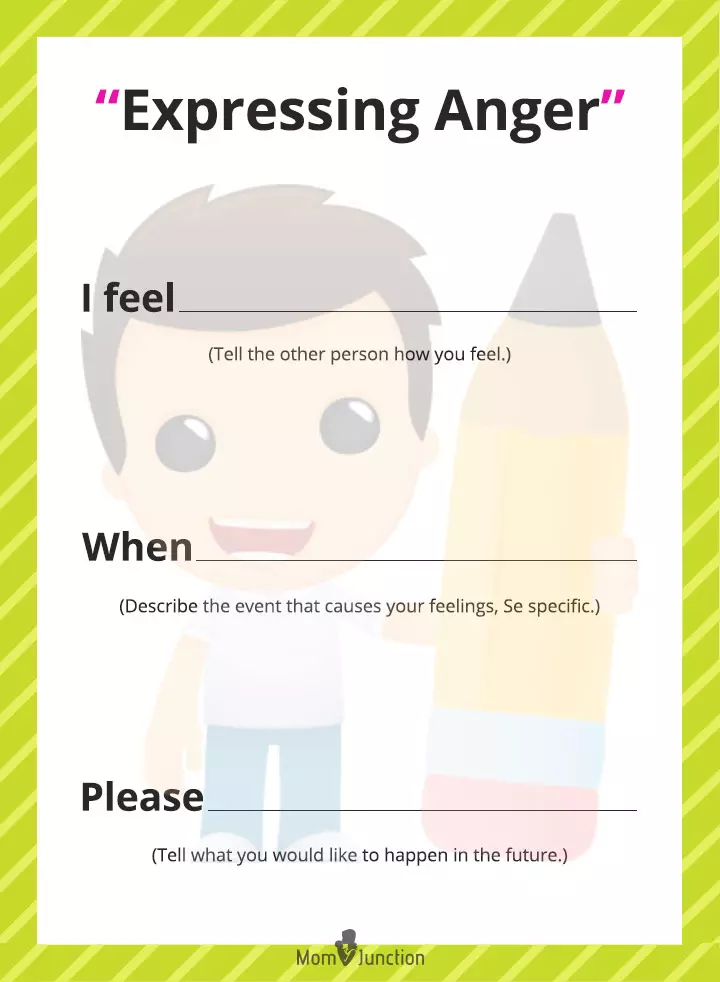
Worksheets may seem like school work at times and may not work well in teaching kids about managing anger. In that case, you can try these games to teach kids about anger and how they can express it.
Anger Management Games And Activities For Kids
Games and activities are fun, but they can also help your kids learn something. Here are a few anger management activities for kids that you can try to teach children a thing or two about managing their temper.
1. Don’t get mad
This game teaches emotional regulation skills and intelligence by enabling the kids to choose how to react to a situation that is likely to frustrate or make them angry.
You will need:
- List of possible situations that make the child angry
- Paper
- A tote bag
How to:
- The game is best played with a group of five to eight people. Before beginning the game, write down different scenarios that could make the children angry. Here are a few examples.
- You feel really sick, but your mother makes you go to school. You feel like yelling at your mother. What do you think you should do instead?
- You want to ride your bike, but it had a flat tire. You feel like knocking the bike over in anger. What do you think you should do instead?
- Your mom made fish for dinner, but you hate fish. You feel like walking away from the table and go to your room. What do you think you should do instead?
- Your friend accidentally spills juice on your favorite shirt. You are upset and feel like spilling some juice on her/his shirt. What should you do instead?
- Gather the children and have them sit in a circle.
- The children take turns to pick a scenario from the bag.
- They have to read out the situation and come up with answers to the questions in the paper.
- Let the child answer and then start a discussion asking what the other kids think.
If the child hasn’t got it right, you can always tell them about better ways to handle a situation when it makes them angry.
2. The anger game
This is a simple multiplayer game that can be played with a single dice.
You will need:
- A single dice
- A task for each number on the dice
Before beginning the game, come up with a topic for each side of the dice. For example, every time you throw a
- one, say one thing that makes you angry
- two, say one thing you can do to calm down when you feel angry
- three, one way you can practice temper control at school
- four, one thing you did when you were angry and regret it
- five, one time when it was difficult for you to control your temper
- six, one time when you took a good decision when you were angry
- You can change the ideas based on your requirements as well.
How to:
- Get the kids to sit in a circle and throw the dice.
- The kids have to mention only one thing for each roll.
- No one else will judge or comment on the other players’ answers.
This game can be played in the classroom or at home with the family.
3. The angry balloon
This is more like an activity, than a game, that objectifies anger and focuses on expressing anger. It is based on the analogy that anger is like a balloon. Here is how you can turn this self-esteem building activity into a fun game. But before you do, here are a few things you should tell the kids.
- The balloon is a person.
- The air you blow into the balloon is the words and feelings, like anger.
You can try this game with one child or a group of children.
You will need:
- A pack of balloons, large
- Space to play
How to:
- Give each kid a balloon and ask them to blow air (anger) into it and hold it, without tying it with a string or knotting it.
- Now ask the kids, “What will happen when you add more words and feelings of anger to the balloon? Will it burst?” Wait for their answers before telling them about it.
- Explain how accumulating feelings can dangerous for us and how it is important to release or express your anger in a safe way. Then ask how they express their anger. Again, wait for their answer.
- Next, ask them to let go of the balloon at once and see how it flies and whizzes around the room, hitting everything that comes in its way.
- Then blow air into the balloons again and this time, release the air slowly, letting it out little by little by stretching the balloon’s mouth a little.
This exercise teaches kids what happens when they bottle up their anger, lash out the anger all at once, and release it slowly using words or art. Besides this one, you can try a few more activities too.
Next, we have activities that will help your child steer away from aggression through physical and mental stimulation.
1. Physical activities
Besides exercise, your child can also try these physical activities to release anger safely.
- Dancing is a better form of exercise that your kids can indulge in when they are angry. Just play some music on the player or find a fun dance video on YouTube that your child can see and dance to. Check the videos before you play them, to ensure there’s no explicit or inappropriate content for kids.
- Riding a bike or skating is fun and takes the child away from the person/situation that makes them angry. However, care should be taken to ensure that the child has all safety gear in place and does not ride rashly in anger.
- Jumping rope is another physical activity that can use up the adrenalin and calm the child down. It is better when played with more people.
- Playing an outdoor sport such as basketball or Frisbee can also help burn the energy that the adrenalin gives the child.
- Gardening can be soothing therapy if the child loves nature. When the child is angry, ask the child to water the plants, pluck out the weeds, or plant some saplings. Or, he can simply go and sit in the garden and breathe to cope with the anger.
- Pets can be therapeutic. One way to beat anger is to play with a pet dog or cat if you have one. The child could simply play fetch with the dog, read a book to it (younger kids), or older children can also walk the pets.
- Sometimes, all you need is to let the angry thoughts out of your head. Sending the child to a calm place to gather their thoughts can be a good idea in that case.
- Relaxation techniques like listening to soft music can help to calm the mind.
- When angry, laugh and anger will dissipate.
2. Creative activities
- Indulging the child in something creative like painting, story writing or sculpting can also be effective.
- Intense emotions such as anger can bring out the creative best in some people (4). When the child gets angry, ask him or her to write a story, poem, or play. They could even write a song.
- Painting, drawing, and sketching also act as creative outlets for anger. Let the child paint his anger with his choice of colors. The pictures or images that children draw when they are unhappy, frustrated, and angry can also give us an insight into their temperament.
- Coloring printed images can also be a great way to calm down when children get angry.
- Another effective way to teach coping skills to a child with anger issues is through collage making – you could tell the child to collect pictures of people, things, and places they like and make a collage of them.
- You could get musical too – ask the child to sing out their anger, play an instrument, or just hum something until they feel calmer.
- You can also try making sock puppets and use them to express anger in a funny, but creative way.
Frequently Asked Questions
1. Can ADHD be a reason for my child’s anger issues?
ADHD may lead to anger and behavioral problems in children (11). So, it may be one of the reasons for rage and anger in your child. However, according to the Child Mind Institute, most children with ADHD do not have any negative intentions behind their anger. Instead, most of their anger originates because others do not comply with their hyperactive and impulsive nature (12).
2. What are the kinds of anger disorders in children?
Oppositional defiant disorder (child is easily angered or irritated), conduct disorder (child hurts others intentionally), and intermittent explosive disorder (child has frequent anger outbursts or temper tantrums) are the significant types of anger disorders in children (13).
3. What are some common myths or misconceptions about anger management in children, and how can we debunk them?
There are numerous misconceptions surrounding anger management in children. One common belief is that anger management teaches children ways to suppress anger. Another belief is that anger management is only necessary for children with severe behavioral issues. However, these beliefs are not valid. Anger management is an approach that helps children understand and express anger healthily. Also, regardless of their behavioral issues, all children should learn anger management methods for healthy emotional development(14)
4. What are some long-term benefits of learning effective anger management skills, both for children and for the people around them?
Learning effective anger management skills helps children identify and regulate their emotions. In addition, these skills promote self-awareness and empathy, which helps reduce aggressive behavior and conflict. It also helps them develop critical thinking and communication skills essential to maintain healthy relationships with peers, family, and other authority figures(15)
Anger is not a bad emotion, but it is not an easy one. Teaching anger management to children becomes important, especially if you notice frequent outbursts, reckless behavior, or loss of self-control or a lack of self-awareness. It is important to know that anger management skills are not about denying or hiding the emotions but releasing them in the right way. Therefore, teach children to use specific vocabulary to talk about their feelings, praise their efforts and behavior, and be a role model. You can also use anger worksheets and anger games or connect them to support groups to help them express themselves better. Be a good listener and support them as they walk along this path.
Infographic: Anger Management Tips For Children
Children often cannot handle their anger and may become violent or aggressive. Parents should help them calm down and teach them calming methods instead of using counter-aggression to discipline them. The infographic below outlines some effective tips on how parents can help their children manage anger.

Illustration: Momjunction Design Team
Illustration: Ways To Handle Anger Management In Children
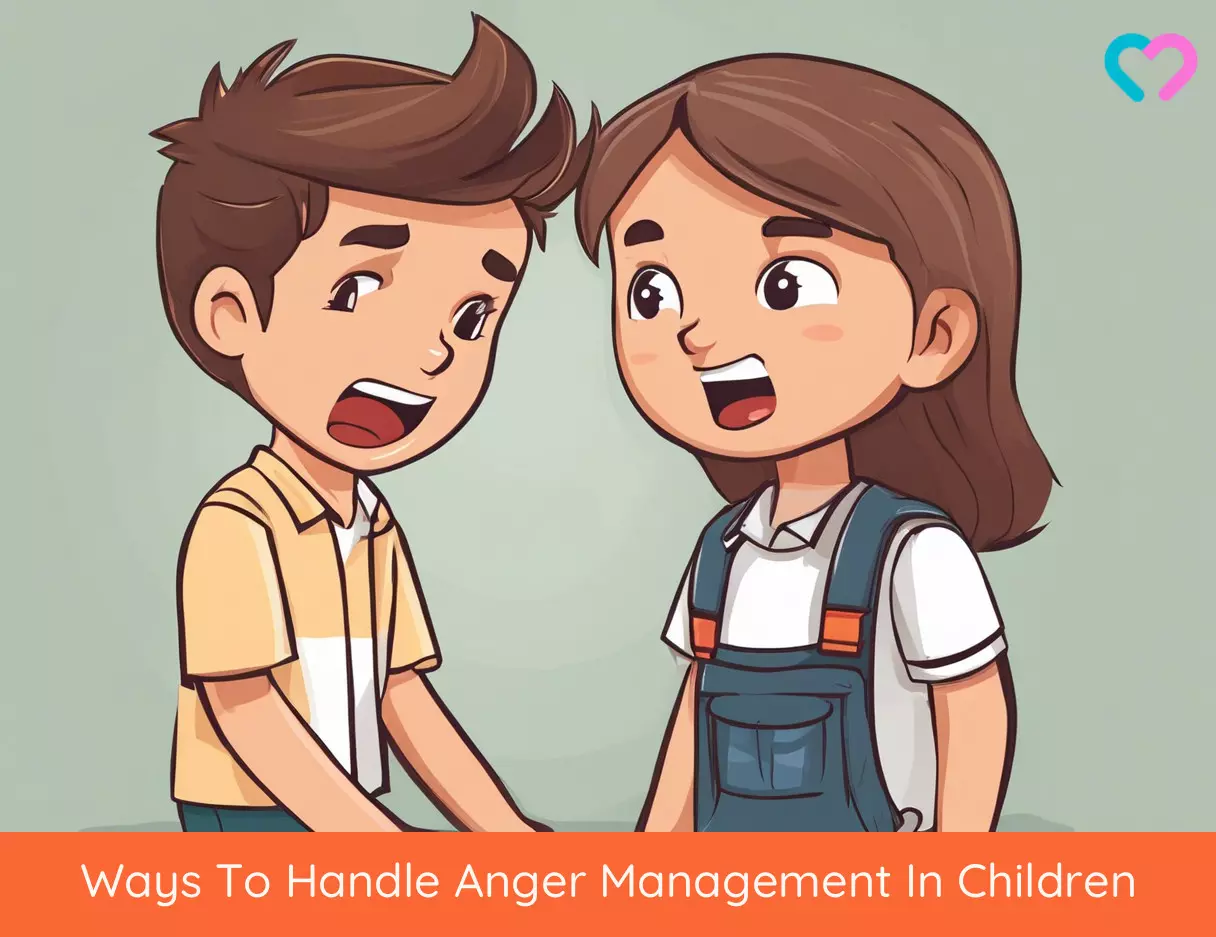
Image: Stable Diffusion/MomJunction Design Team
Learn how to help your child manage their anger with these simple and effective techniques. Discover strategies to help them calm down when their temper rises.
Personal Experience: Source
MomJunction articles include first-hand experiences to provide you with better insights through real-life narratives. Here are the sources of personal accounts referenced in this article.
i. My battle with anger as a parent.https://medium.com/modern-parent/my-battle-with-anger-as-a-parent-24e7837c5fac
References
- 12 signs your elementary-age child has anger issues.
https://familyresourcesinc.org/2019/02/signs-elementary-age-child-anger-issues/ - Anger, Irritability and Aggression in Kids.
https://www.yalemedicine.org/conditions/anger-issues-in-children-and-teens - Is My Child’s Anger Normal?
https://childmind.org/article/is-my-childs-anger-normal/ - Anger Management: How to Help You and Your Kids Stay in Control.
https://www.mghclaycenter.org/parenting-concerns/anger-management-how-to-help-you-and-your-kids-stay-in-control/ - Angry Kids: Dealing With Explosive Behavior.
https://childmind.org/article/angry-kids-dealing-with-explosive-behavior/ - How To Train A Child On Anger Management?
https://www.unicef.org/egypt/sites/unicef.org.egypt/files/2018-10/Bullying-Teachers-EN_1.pdf - Managing anger: recommendations for teachers & parents.
https://www.education.udel.edu/wp-content/uploads/2013/01/Anger-3.22.06.pdf - Anger management for kids.
https://growingearlyminds.org.au/ - R. J. R. Blair; (2012); Considering anger from a cognitive neuroscience perspective.
https://www.ncbi.nlm.nih.gov/pmc/articles/PMC4808661/ - Anger and aggression in children.
https://www.parenthelp.org.nz/anger-and-aggression-in-children/ - Helping your child with anger issues
https://www.nhs.uk/mental-health/children-and-young-adults/advice-for-parents/help-your-child-with-anger-issues/ - Other Concerns and Conditions of Tourette Syndrome.
https://www.cdc.gov/tourette-syndrome/other-concerns/?CDC_AAref_Val=https://www.cdc.gov/ncbddd/tourette/otherconcerns.html - ADHD and Behavior Problems.
https://childmind.org/article/adhd-behavior-problems/ - Disruptive Behavior Disorders in Children.
https://www.chop.edu/conditions-diseases/disruptive-behavior-disorders-children - Anger Management
https://www.helpguide.org/relationships/communication/anger-management - Benefits of Anger Management
https://wfmchealth.org/family-health-care/benefits-of-anger-management/
Community Experiences
Join the conversation and become a part of our nurturing community! Share your stories, experiences, and insights to connect with fellow parents.
Read full bio of Dr. Ellapen Rapiti
Read full bio of Sagari Gongala
Read full bio of Swati Patwal
Read full bio of Apoorva K








